Plastic extrusion faces frequent challenges that can impair efficiency and product quality, affecting a multitude of industries.
Plastic extrusion faces challenges like inconsistent material flow, overheating, die build-up, and product defects. Solving these enhances quality and efficiency, vital for packaging, automotive, and construction industries.
While this summary outlines key challenges, gaining a deeper understanding of the extrusion process and its problems is vital for improving your production outcomes. Dive deeper to learn how to mitigate these issues effectively.
Inconsistent material flow is a frequent problem in plastic extrusion.True
Inconsistent flow can lead to irregular product dimensions and poor quality, necessitating careful control of processing parameters.
All extruders experience overheating during the extrusion process.False
While overheating can occur, proper equipment maintenance and cooling systems can prevent it in many cases.
- 1. Material Selection in the Extrusion Process is Likely to Cause What Problems?
- 2. Mold in the Plastic Extrusion Process Will Appear What Difficulties?
- 3. Extrusion Process Parameter Settings in the Extrusion Process Often Encounter What Kind of Problems?
- 4. Plastic Extruder Extrusion Process May Occur in Other Problems?
- 5. Conclusion
Material Selection in the Extrusion Process is Likely to Cause What Problems?
Choosing the right materials in the extrusion process is critical for maintaining product quality and efficiency, yet it often leads to challenges in production, consistency, and performance.
Selecting the right material in extrusion is vital to ensure product quality, processing efficiency, and cost-effectiveness, impacting mechanical properties, thermal stability, and ease of processing.
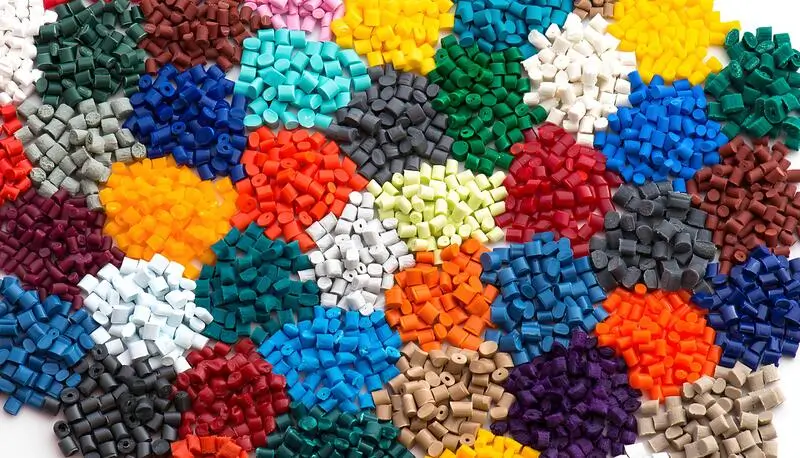
Proportioning of Plastic Raw Materials
If the proportion of plastic raw materials is not right, such as the coordination is not good, the additives are too much or too little, it will lead to poor extrusion molding1 or the quality of the product is not up to standard. Solution: The proportion of raw materials should be reasonably controlled according to the process requirements of the product and other factors.
Material Properties
When you pick materials, you gotta think about their properties, like melting point, flowability, hardness, and all that. Different materials have different properties. Different materials have different characteristics, so it’s gonna affect the parameters of the extrusion process too.
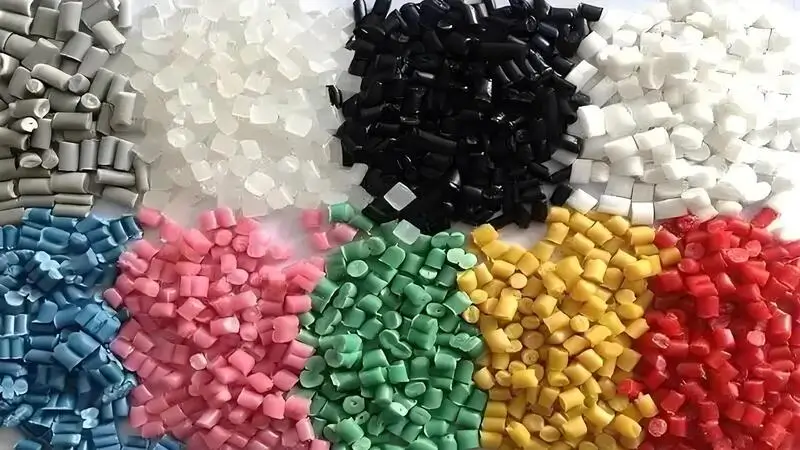
Material Particle Size
The size of the material particles has a big effect on the extrusion process. If the particles are too big, the melt won’t flow well and the machine will get clogged up. If the particles are too small, you’ll get air bubbles and the surface won’t look good.
Material Humidity
Material moisture also affects the extrusion process. Too much moisture can cause melt degradation and air bubbles; too little moisture can cause static electricity and surface defects. Too many impurities in the plastic raw materials or too much water will cause poor extrusion molding or product quality that does not meet the standard. Solution: need to screen or dry the raw materials before production, while strengthening the quality control and inspection of raw materials.
Incorrect material selection can compromise extrusion product quality.True
Materials not suited to the extrusion process may lead to defects such as uneven surfaces, breaking, or deformation, affecting final product quality.
Material selection in extrusion is purely cost-driven.False
While cost is a factor, selecting materials also involves considering compatibility with the extrusion process and desired product properties.
Mold in the Plastic Extrusion Process Will Appear What Difficulties?
Mold issues in the plastic extrusion process can impede production efficiency, affect product quality, and lead to increased maintenance costs across various manufacturing sectors.
Challenges in plastic extrusion mold include surface defects, contamination, and inconsistent dimensions, leading to waste and increased costs. Effective mold maintenance and quality control are essential to address these issues.

Mold Structure Design
The design of the mold structure should be reasonable to ensure the quality of the product. The structure of the mold should be as simple as possible, avoiding too many edges and complex structures.
Mold Material Selection
Mold materials should be hard and wear-resistant, and also consider the cost and processing difficulty. Commonly used mold materials are alloy steel, cemented carbide, etc.
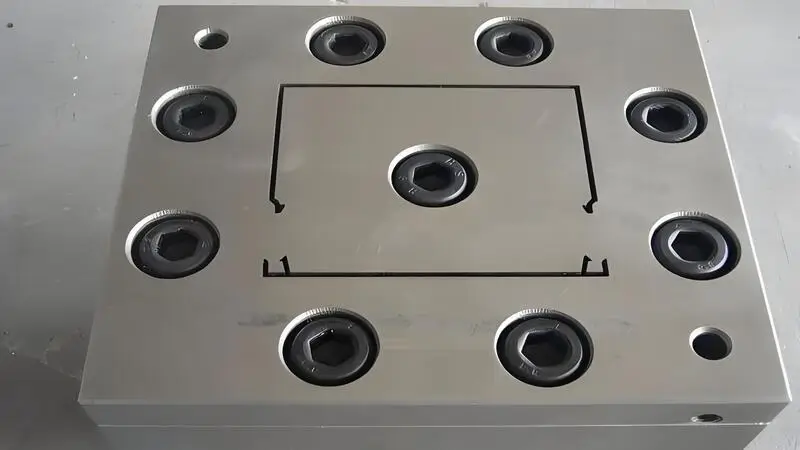
Mold Surface Treatment
Surface treatment of molds can enhance the quality of the product surface and reduce friction. Commonly used surface treatments include electroplating, spraying, and polishing.
Mold Life Issues
- Issue:Extruder dies wear out quickly and need to be replaced often. Cause: The die material is not right, the extruder is not running right, and the lubrication is not good. Fix: Get a better die material, get the extruder running right, and get better lubrication and maintenance.
Mold Clogging
- Possible reasons:The material particles are either too large or there are too many impurities present, etc. Solution: Screen the material to remove impurities and ensure that the particle size is appropriate.
Regular mold maintenance reduces extrusion defects.True
Consistent cleaning and inspection of molds prevent contamination and flaws, improving overall product quality and reducing waste.
Mold issues in extrusion are impossible to prevent.False
While challenging, proactive measures such as optimized mold design and routine maintenance can significantly reduce mold-related issues in the extrusion process.
Extrusion Process Parameter Settings in the Extrusion Process Often Encounter What Kind of Problems?
Setting optimal parameters in the extrusion process is critical for efficient production, but various challenges often arise, affecting product quality and consistency.
Key issues in extrusion process include maintaining temperature uniformity, managing die swell, and ensuring consistent material flow, crucial for high-quality products.

Temperature Control
The temperature of extrusion molding2 is to make the molding material plasticized and the plastic melt flow necessary conditions. The plasticization of the material and the quality and yield of the product have a very important impact. The theoretical temperature window for plastic extrusion is between the viscous flow temperature and the degradation temperature.
For polyolefins, the temperature range is wider. You can usually process them above their melting point and below 280 degrees. To control the extrusion molding temperature3 correctly, you must first understand the temperature limits of the material you are processing and how its physical properties relate to temperature. Once you understand the characteristics and laws of the material, you can choose a better temperature range for extrusion molding.
So, when setting the temperature in each section, you should consider the following: First, you should consider the properties of the polymer itself, such as the melting point, molecular weight, melt index, and so on. Second, you should consider the performance of the equipment. For some equipment, the temperature of the feed section has a great influence on the current of the main engine. Third, you can observe whether the surface of the extruded billet from the pipe die head is smooth, and whether there are bubbles and other phenomena.
The extrusion temperature is the sum of the set temperature of the heater and the melt temperature4. The heating temperature is the temperature provided by the external heater. The melt temperature is the temperature of the material between the front section of the screw and the head connection.

The temperature of the barrel can be flat, increasing, decreasing, or mixed from the feed zone to the die head. It mainly depends on the material and the structure of the extruder.
To get better appearance and mechanical properties, and to reduce the swell at the die, the body temperature is generally lower and the head temperature is higher. A higher head temperature helps the material flow smoothly into the die, but it makes the shape of the extrudate less stable and increases shrinkage.
When the temperature of the head is low, the material is bad plastic, the melt viscosity is high, and the head pressure rises. Although this will make the product too dense, the shrinkage is small, the product shape is stable, but the processing is more difficult, the mold release is larger, and the product surface is rough. It will also cause the back pressure of the extruder to increase, the equipment load to increase, and the power consumption to increase.
The temperature of the mouth mold and the core mold affects the surface finish of the tube. Within a certain range, the higher the temperature of the mouth mold and the core mold, the better the surface finish of the tube.
Generally speaking, the temperature at the exit of the mouth mold should not exceed 220 degrees, the temperature of the melt at the entrance of the head should be 200 degrees, and the temperature difference between the melt at the entrance and exit of the head should not exceed 20 degrees.
This is because a larger temperature difference between the melt and the metal will cause sharkskin. If the melt temperature is too high, material will accumulate in the mouth mold. However, this should be determined according to the actual situation.

The melt temperature is the actual temperature of the melt measured at the end of the screw and is therefore the dependent variable. It is mainly determined by the screw speed and the barrel setting temperature. The upper limit of melt temperature for polyethylene pipe extrusion is generally set at 230 degrees.
A temperature of around 200 degrees is generally preferred. The upper melt temperature limit for polypropylene pipe extrusion is generally 240 degrees. The melt temperature should not be too high. General consideration of material degradation, while the temperature is too high will also make the pipe shaping difficulties.
Extrusion Pressure Control
The most important pressure parameter in the extrusion process is the melt pressure, also known as the head pressure. In general, increasing the melt pressure5 will decrease the output of the extruder and increase the compactness of the product, which is good for improving product quality.
However, excessive pressure will bring safety problems. The size of the melt pressure is related to the properties of the raw materials, the structure of the screw, the speed of the screw, the process temperature, the mesh size of the filter, the porous plate, and other factors. The melt pressure is usually controlled between 10-30 MPa.
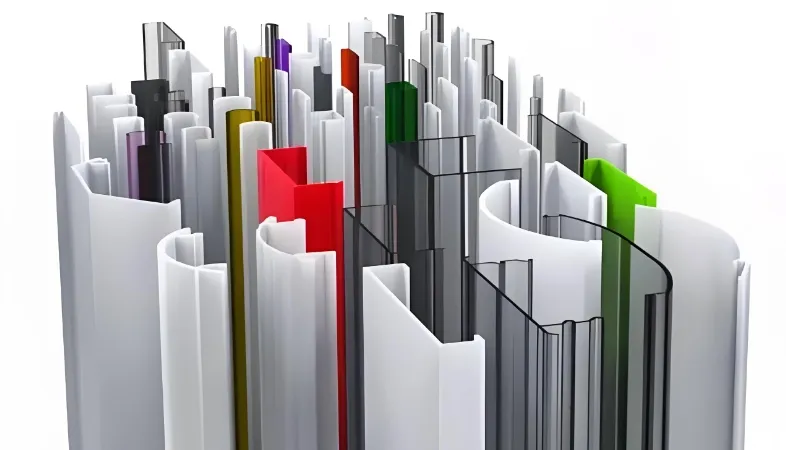
Feed Speed Control
The speed at which you feed the product and the size and quality of the surface have a big impact. If you go too fast or too slow, you’ll have problems like dimensional deviation, bubbles, and so on.
Cooling Method Selection
The choice of cooling method also affects the quality of the product. Common cooling methods include water cooling, air cooling, etc. You need to choose according to the actual situation.
The cooling water temperature requirement in polyethylene pipe extrusion molding is generally low, usually below 20 degrees. In the production of PPR pipe, the temperature can be slightly higher in the first section and lower in the latter section, thus forming a temperature gradient.
Adjusting the cooling water flow is also quite important. If the flow rate is too high, the surface of the pipe is rough and produces spots and pits. If the flow rate is too small, the pipe surface produces bright spots easy to pull off, such as uneven distribution, uneven wall thickness of the pipe, or oval.
Screw Speed and Extrusion Speed
Screw speed is used to control the extrusion rate, output, and product quality of heavy industry parameters. When the speed of the single-screw extruder increases, the yield increases. When the shear rate increases, the apparent viscosity of the melt decreases. This is good for the homogenization of the material.

At the same time, because the plasticization is good, the intermolecular force increases, and the mechanical strength increases. However, if the screw speed6 is too high, the motor load is too large, the melt pressure is too high, the shear rate is too high, the mold swelling increases, the surface becomes bad, and the extrusion volume is not stable.
Haul-Off Speed
The speed of the haul-off machine directly affects the thickness of the product wall, the size tolerance, the performance and the appearance. Therefore, the speed of the haul-off machine must be stable, and the speed of the haul-off machine must match the speed of the pipe extrusion machine. The ratio of the speed of the haul-off machine to the speed of the pipe extrusion machine reflects the degree of orientation of the product. This ratio is called the draw ratio7, and the value of the draw ratio must be greater than or equal to 1.
The faster you pull, the thinner the pipe wall, and the longer it shrinks. The slower you pull, the thicker the pipe wall, and the more likely you are to get a plug between the die and the calibrator. This will ruin your extrusion. So you have to control your pull and your speed.
Back Pressure Control
The back pressure of the extruder extrusion process screw is too high or too low. The reason is that the screw is not cleaned in time, there are foreign objects blocking the barrel, and the back pressure is not adjusted properly. The solution is to clean the screw regularly, remove foreign objects in the barrel, and adjust the back pressure parameters.
When the speed of the haul-off machine increases, if the temperature conditions for cooling and shaping remain unchanged, if the speed of the haul-off machine is fast, then the product in the shaping sleeve, the time for the product to stay in the cooling water tank is relatively short, and after the product is cooled and shaped, there will still be more residual heat inside the product.

This heat will cause the product to be de-oriented from the orientation structure that has already been formed during the process of being hauled off. This will cause the degree of orientation of the product to decrease.
Not enough back pressure: Back pressure is the resistance that plastic has to overcome to flow into the feed hole. If the back pressure is not enough, the plastic will not be fully plasticized or will lose stability. Solution: Increase the back pressure8 by changing the mold structure or changing the lubrication method, etc., to achieve a suitable state.
Extruder Screw Wear
Extruder Screw Wear Reasons Extruder
Screw and barrel wear usually happens in the feed zone and metering zone. The main reason for wear is the dry friction between the pellets and the metal surface when the pellets are heated and softened. After the wear is reduced.
When the screw gets jammed with foreign material, it wears abnormally. When the screw gets jammed, it gets “ringed” by the material that’s been compacted. If the screw extruder doesn’t have a good protection device, the screw can get twisted off by the strong driving force.
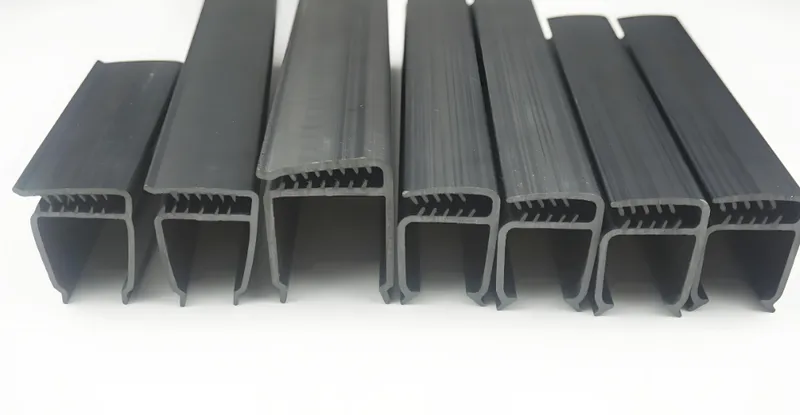
When it gets jammed, it creates an unusually large resistance, which causes serious damage to the surface of the screw and serious scratches on the barrel. It’s really hard to fix. The barrel is designed to last longer than the screw. When the barrel wears normally, you usually don’t fix it. You usually fix the screw threads to restore the radial clearance between the barrel bore and the screw outer diameter.
Extruder Screw Wear Solutions
To fix localized damage to screw threads, you can use special anti-wear and anti-corrosion alloys. Usually, you’ll want to use inert gas shielded welding and plasma argon arc welding. You can also use metal spraying technology to fix the damage.
First, grind the worn cylindrical surface of the screw to a depth of about 1.5mm. Then, weld an alloy layer onto the surface to build it up to the proper size, making sure to leave enough material for machining. Finally, grind the cylindrical surface and the threads of the screw to the original dimensions of the screw.
Temperature uniformity is the most significant challenge in extrusion settings.True
Inconsistent temperatures can lead to product defects, making it essential to maintain uniform heating to ensure quality results.
Die swell is unpredictable and can't be managed during extrusion.False
Die swell can be controlled by adjusting parameters such as temperature, pressure, and extrusion speed, allowing for improved product consistency.
Plastic Extruder Extrusion Process May Occur in Other Problems?
The plastic extruder extrusion process is critical for producing various plastic products, but it can face challenges that affect output and quality.
Plastic extrusion issues include inconsistent dimensions, melt fracture, and thermal degradation, often due to poor temperature control, worn equipment, and incorrect material selection.

Operational Problems
If the operators don’t understand the equipment and process requirements, the extrusion molding results will be poor or the product quality will not be up to standard. Solution: Train the operators to improve their understanding and mastery of the equipment and process.
If the operating environment is not good, such as temperature, humidity and other factors, it will affect the extrusion molding results. Solution: We need to create a good production environment to ensure that the temperature and humidity and other factors are in the appropriate range.
Post-Processing Problems
Using drawing, cutting, and other post-processing technology requires skill. If you don’t know what you’re doing, it will affect the quality of your products. Solution: Train and guide your post-processing operators so they know what they’re doing and do it right.
If the post-processing equipment is damaged or not maintained properly, it will also affect the quality of the product. Solution: Regularly inspect, maintain, and repair the post-processing equipment, and promptly detect and deal with equipment damage and failure.
Equipment Problems
If you have problems with your extruder, like the temperature is wrong, the nozzle is clogged, or the nozzle is worn out, you will get bad extrusion or bad parts. Solution: You need to adjust the temperature, the pressure, and the speed of the nozzle to make sure the machine is working right. If you don’t clean and take care of your machine, it will also mess up your extrusion. Solution: You need to clean and take care of your machine, and fix it if it breaks.

Deformation and Structural Problems
- barrel deformation:barrel deformation will cause poor plasticizing effect, unable to shape. Solution: Detect whether the barrel is deformed or replace it in time when it is found to be deformed.Uneven wall thickness is a big no-no. It’ll make your finished products look like crap and cost you more money. Here’s what you do: Design your product so it doesn’t have uneven wall thickness. Look at the shape of your product and the material you’re using, and make sure the walls are the same thickness all the way around.
Hot Melt System Failure
-
Temperature control failure: If the temperature control is not done properly, the product will fail. Solution: Fix the temperature control system or replace the control instrument, and adjust the temperature control parameters.
-
Plasticization failure:Plasticization is when you melt the solid plastic and make it flow. If the temperature, time or quality of the plasticizer is not right, it will not plasticize well and you can’t mold it. Solution: Adjust the temperature, time or increase the barrel volume to get more plasticizer.
Feeding System Failure
-
Changing the material is not timely:different materials need to adjust the amount of feed and feed speed, no adjustment will lead to poor feeding. Solution: Change the material regularly or adjust according to the nature of the material.
-
Feeding pipe clogging: this will cause material to not enter the screw, resulting in material breakage and screw speed too fast, which will burn out the motor. Solution: Clean the clogged pipe or add heating elements to heat the pipe.
Melt fracture is a common issue in plastic extrusion.True
Melt fracture occurs when the extruder's die geometry or speed settings disrupt the smooth flow of the polymer, causing surface defects.
Thermal degradation is unavoidable in plastic extrusion.False
Thermal degradation can be minimized with precise temperature control and the use of heat-stabilized materials, which help maintain product integrity.
Conclusion
Plastic extrusion processes often have problems with raw material selection, mold design, process parameters, and equipment failure. If the raw materials are not properly proportioned, have too much moisture, or have particles that are too large, the quality of the product can be affected. If the mold is poorly designed, worn, or clogged, it can also cause problems.
Temperature control, extrusion pressure, feed rate, and cooling must be carefully controlled to ensure quality. Equipment maintenance and operating conditions can also affect the results of the molding, and operators must be trained to avoid operator error. Proper post-processing techniques and equipment maintenance can improve product quality.
-
Explore this resource to understand the essential techniques and parameters for successful extrusion molding, ensuring high-quality products. ↩
-
Discover the optimal temperature settings for extrusion molding to enhance product quality and processing efficiency. ↩
-
Controlling extrusion molding temperature is vital for achieving desired product characteristics. This resource provides essential guidelines and tips. ↩
-
Understanding melt temperature is crucial for optimizing extrusion processes and ensuring product quality. Explore this link for in-depth insights. ↩
-
Melt pressure is a key parameter in extrusion that affects product quality and safety. Learn more about its influencing factors and management. ↩
-
Understanding screw speed is crucial for optimizing extrusion processes and improving product quality. Explore this link for in-depth insights. ↩
-
The draw ratio is vital for achieving desired product specifications. Learn more about its significance in extrusion processes. ↩
-
Back pressure is essential for ensuring proper plasticization and stability. Discover more about its importance in extrusion. ↩









